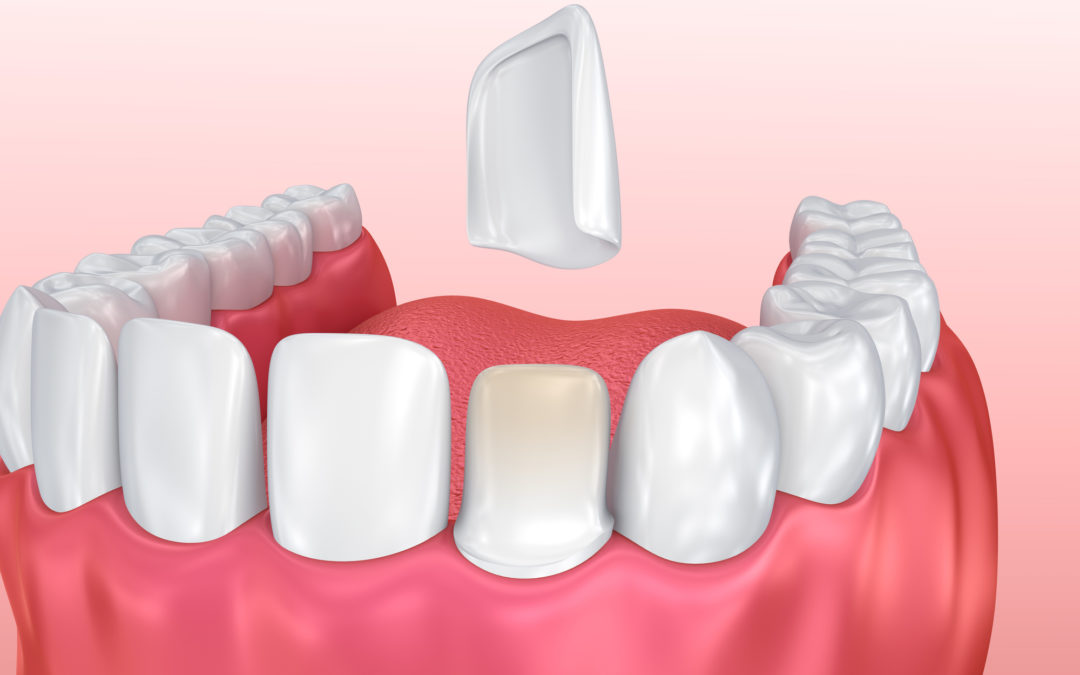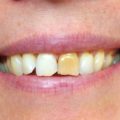If you’re unhappy with the appearance of your teeth, composite veneers may be the solution you’ve been looking for.
Composite veneers are a type of dental veneer made from composite resin, a durable, tooth-colored material.
Composite veneers can be used to correct a wide variety of cosmetic dental problems. This includes stained teeth, crooked teeth, and chipped or cracked teeth. They can also be used to improve the function of teeth that have been damaged by trauma or decay.
Read on to learn more about how they could help you improve your smile!
What Are Composite Veneers?
Composite veneers, also known as composite resin dental veneers, are made from composite resin. It is a strong, tooth-colored material. The resin is made from a combination of harmless plastic and glass fibers, which are mixed with a resin matrix.
Composite veneers may be used to improve the appearance of teeth. They can also be used to fill in spaces between teeth. Composite veneers are often less expensive than porcelain veneers, and they may be a good option for people who have allergies to porcelain.
They are bonded to the teeth using a special dental adhesive. The process usually takes one or two visits to the dentist. Composite veneers are not as strong as porcelain veneers and may not be as durable. They may also discolor over time.
Composite Veneers vs Porcelain Veneers
When composite veneers were first introduced to the market, they were considered a great way of disguising an imperfect smile. However, composite veneers offered little in the way of durability and often failed after only a year or two.
Generally speaking, as we explain on our website, composite veneers last between half a year and five years, but sometimes up to seven. That is a markedly shorter time than porcelain veneers. However, there are some upsides to composite veneers as well as downsides.
For example, composite veneers are much faster to provide to patients and easier to fix. There are drawbacks too. Composite resin is susceptible to staining from coffee and tea consumption.
While composite veneers do offer an aesthetic benefit, some patients find they lack the durability and stain resistance of their porcelain counterparts. When composite veneers are compared to porcelain veneers in terms of longevity, there is no contest: composite veneers last a fraction of the time that porcelain does.
When they’re compared on flexibility and repairability they score higher.
Composite vs Porcelain: Aesthetic Appearance
A composite veneer can be moulded and manipulated into the right shape and colour during treatment. They can even be used to fill in gaps between teeth or improve the alignment of teeth.
However composite veneers are more prone to staining than porcelain veneers and composite cannot be as thin as porcelain veneers, so composite is less translucent.
Porcelain provides a more natural aesthetic appearance but composite offers the flexibility to fix imperfections during treatment. That’s a valuable quality for people like sports stars who might be more likely to sustain a damaged tooth.
Technically, though easier to fix, composite veneers are not as durable as porcelain.
Porcelain is a very hard material and composite resin is less so. This means that porcelain is less likely to chip or crack than composite. In durability tests porcelain wins hands down.
Composite Veneers Cost
The cost of composite veneers is another place they come out on top. Composite is more affordable than porcelain because generally speaking, dental specialists don’t need to use a lab and the composite material is not as costly as porcelain.
What composite veneers will cost you depends on the number of composite veneers you need and where you get them done. The more composite veneers you require, the higher the overall charge, and it’s usually priced per tooth. In addition, in larger cities, composite veneer prices tend to be higher than in smaller towns.
A composite veneer typically costs between $200 and $600, while a porcelain veneer can cost anywhere from $800 to $2000 per tooth.
Composite Veneers Procedure
The composite veneer process usually takes between one and two visits to the dentist.
During your first visit, your teeth will be prepared for the veneers. This may involve removing a small amount of tooth enamel so that the composite resin can adhere properly. You’ll also have an impression taken of your teeth so that the veneers can be made to fit your teeth.
During the second visit, composite resin will be applied to your teeth and hardened with a laser. The composite veneer will then be polished so that it looks as natural as possible.
Even with careful dental work, a composite veneer doesn’t look as natural as porcelain. Porcelain is semi-translucent and composite is opaque.
It’s also harder to match composite veneers with your natural teeth in terms of shade, which may make the composite look like a false tooth rather than a natural part of your smile.
Which Is More Common: Composite or Porcelain?
Porcelain veneers are far more common than composite because they tend to look better, last longer, and provide better value for money.
However composite veneers do have their place in cosmetic dentistry as composite veneers can more easily be fixed during treatment due to the flexibility of composite resin.
Are you considering getting some composite veneers? Or perhaps you’re thinking that porcelain veneers would be a better option?
We consider smile design studio to be the best dental clinic in Australia for composite veneers, porcelain veneers, orthodontic work, and a complete smile make-over. So we’re well-positioned to advise on the best option for you.
Whether you have crowded teeth or gaps, orthodontic work is often required before cosmetic veneers are applied. You can take a look at our smile gallery to see some of our former work.
Who Are Composite Veneers Suitable For?
Composite veneers are a good option for people with healthy teeth who want to improve the appearance of their smiles.
They’re not suitable for everyone, as composite veneers require some tooth preparation and removal of enamel. If you have sensitive teeth or extensive dental work that needs to be preserved, composite veneers may not be the best option for your teeth.
Composite veneers can also be used to fix gaps between teeth or improve the alignment of teeth. But, if you have a lot of gaps or significant gaps braces are a better option. So we recommend you read our other blogs on orthodontic treatments, Invisalign, and braces.
Young children and teenagers who are still growing should not get composite veneers as their mouths may change shape during their growth, and composite veneers may no longer fit well or suit them.
In addition, composite veneers cannot be used on teeth that have extensive decay because the composite resin is susceptible to staining from bacteria and plaque.
Dental specialists do not typically offer composite veneers to people who have a history of gum disease, as composite resin is linked to making patients more susceptible to infection.
What Are the Non-Cosmetic Uses for Composite Veneers?
Composite veneers can also be used to cover up dental work that’s been done in the past, such as metal fillings or crowns.
Composite veneers have many non-cosmetic uses, which include:
- Strengthening teeth that have been worn down by grinding (bruxism)
- Protecting teeth that have been damaged by a blow to the face
- Repairing chipped or broken teeth
Wondering, what’s the difference between a veneer and crown? A veneer is a thin layer of porcelain or composite that’s glued to the front surface of a tooth.
A crown, on the other hand, is a cap that covers the entire tooth, from the gum line to the top of the tooth. Crowns are usually made out of porcelain or composite resin but the main difference is the area of tooth coverage.
So Should You Get Composite Veneers?
If you’re looking for a short-term cosmetic solution that won’t break the bank, composite veneers are a good choice. That’s especially true if it’s just one or two teeth, but for the most realistic and natural look, porcelain veneers are much better.
In some cases, a combination of both composite and porcelain and some careful orthodontic work may be the best option.
If composite veneers sound like they might be right for you, contact us today to book a consultation with one of our friendly dentists. We can help you decide on the next steps and advise you on how to achieve your perfect smile. We proudly serve clients from across the whole of Australia!









